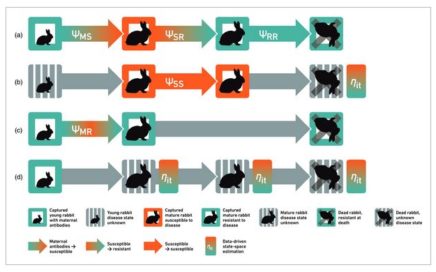Virus immunity in young rabbits
CSIRO funded researchers have discovered why young rabbits are immune to RHDV1, but not RHDV2. It seems that young rabbits have a naturally heightened immune system, but RHDV2 is able to shut down the elevated immune state – whereas RHDV1 is not. For more information, see the Research Updates in Feral Flyer Issue 350 (the […]

